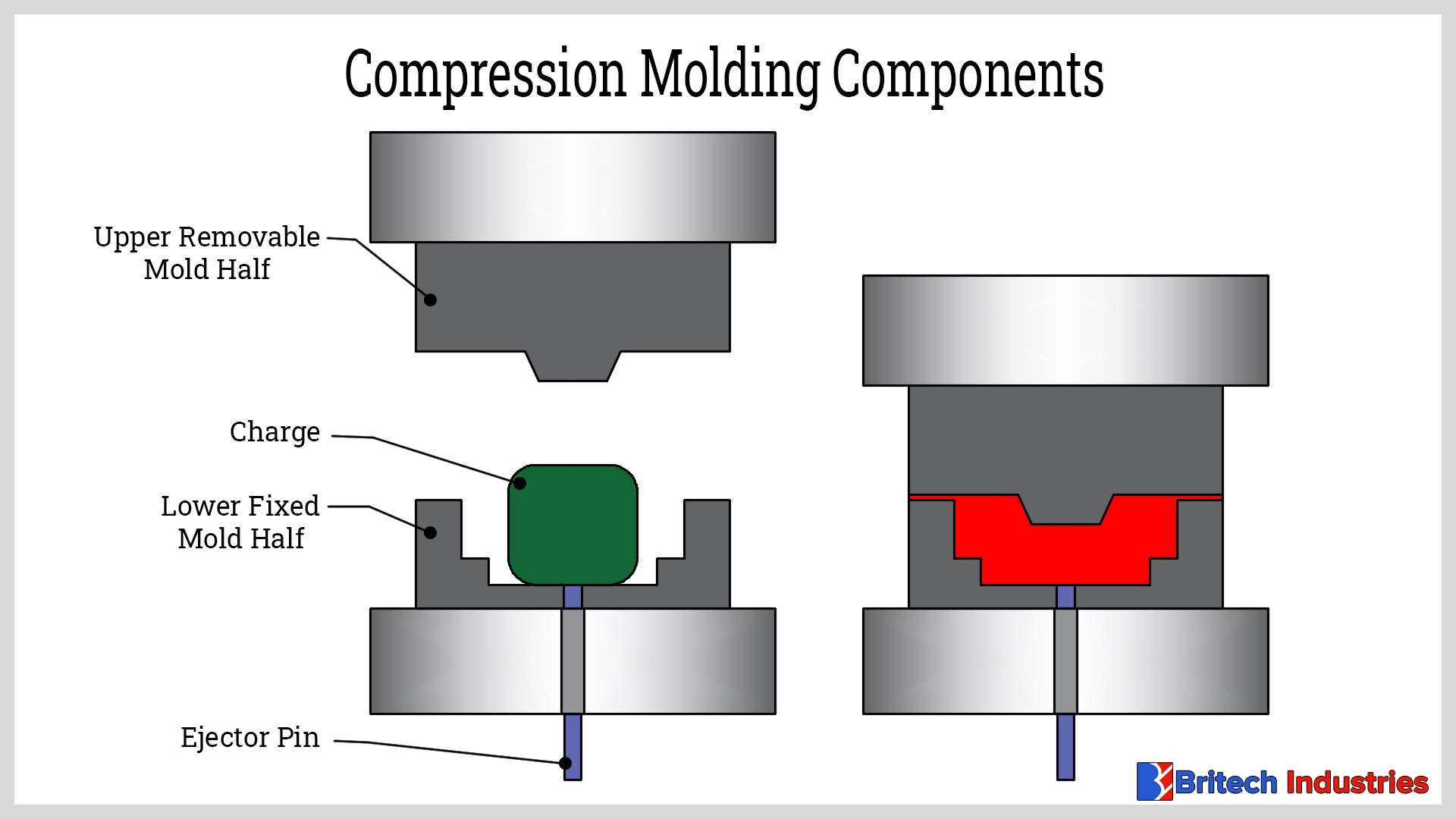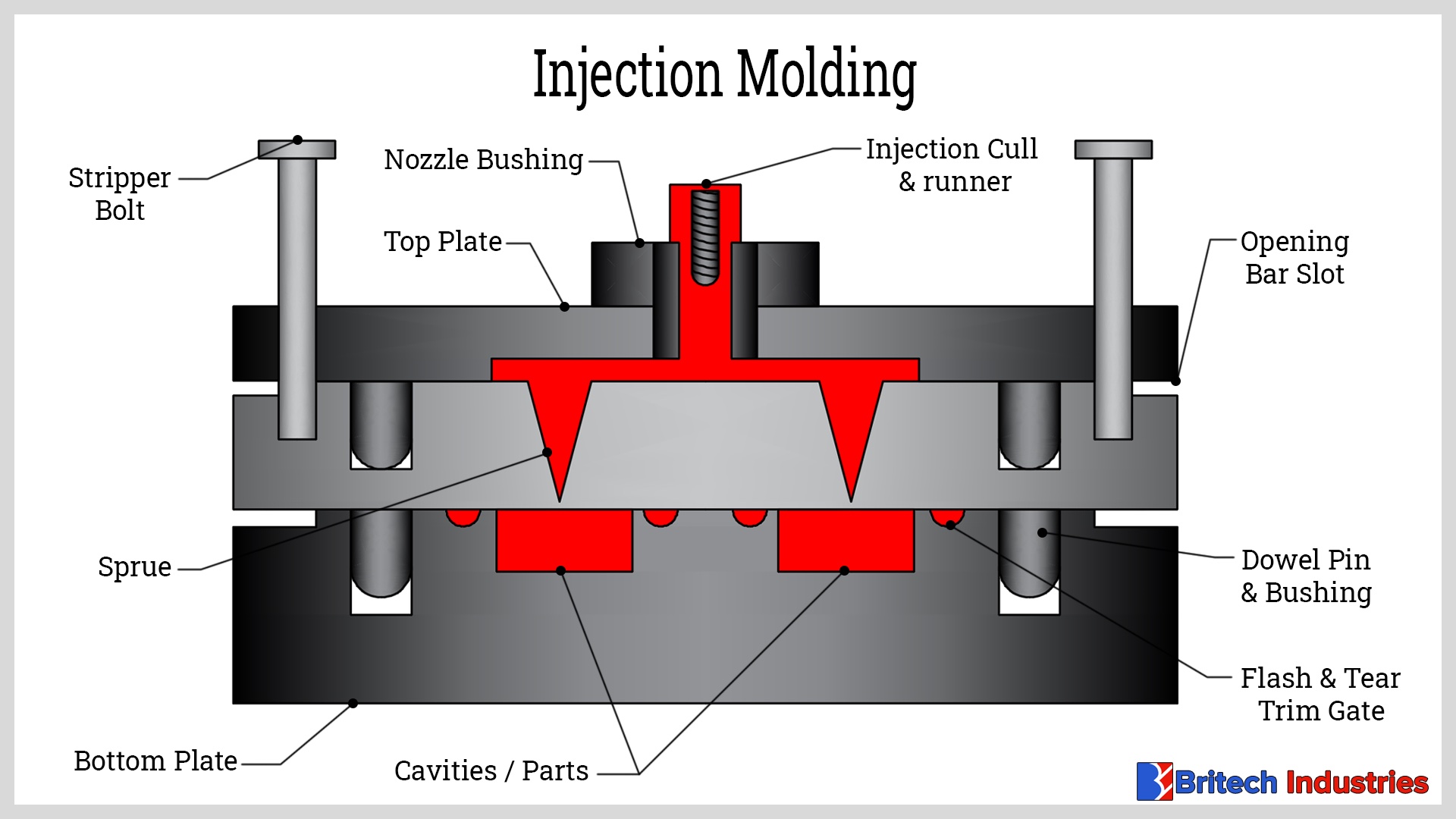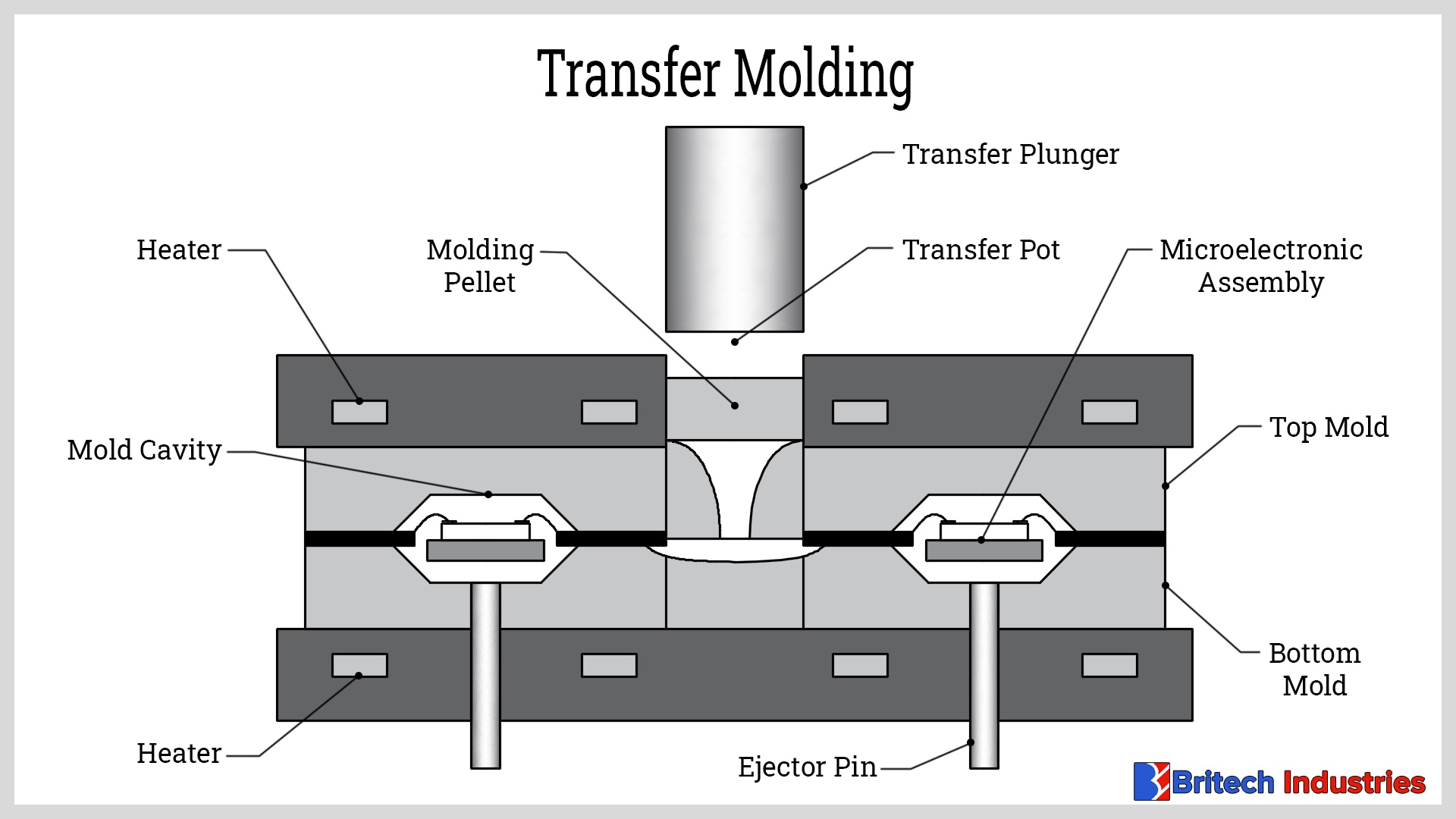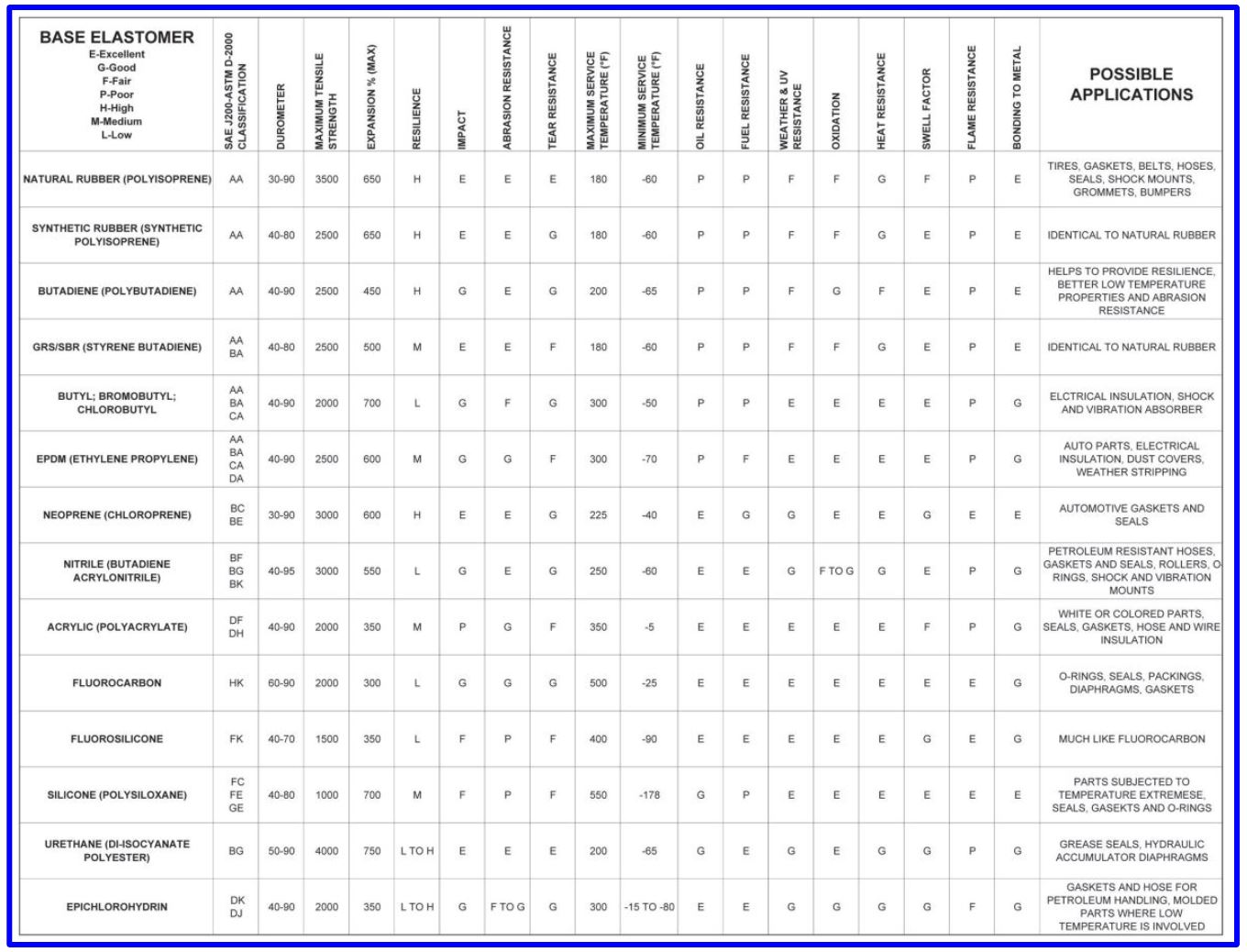Types of Rubber Molding
There are a variety of processes used to mold rubber. The type that is used depends on
the final use of the product and the manufacturing company. Below are three common
types used to produce rubber parts and products.
Rubber Compression Molding
Compression molding is similar to making a waffle in
a waffle iron. The process was initially used to form plastics and has been adapted for
rubber applications. It is a highly efficient and economical production method that
produces excellent quality parts that have the same specifications throughout a run.
A predetermined amount of rubber compound is placed directly into the mold cavity. It is
compressed into the shape of the cavity by closing the two sides of the mold. Pressure
is maintained, and heat is added to cure the product. Once the mold cools and the
product is cured, it is removed from the mold. Any excess rubber, referred to as flash, is
removed and set aside for reuse.

Rubber Injection Molding

The compression method depends on pressure to take
the elastomer and reshape it. The injection process involves heating uncured rubber to
transform it into a liquid form. It is then injected into a mold to be formed. Once it cools,
it is ejected to make room for the next injection.
Rubber Transfer Molding
Transfer molding begins with a piece of uncured rubber
preformed to a specified weight and shape. It is placed in a portion of a mold called the
"pot", which is located between the top plate of the mold and the ram, and closed to
transfer the uncured rubber into the mold cavity through a runner and gate system. The
uncured rubber is held under pressure and temperature to activate the curing process.
The cured part is ejected after a specified period of time.
Regardless of the process used, parts and components produced from rubber molding
have strength, endurance, flexibility, stress and wear resistance, and are recyclable.
They can be efficiently mass produced using a wide variety of designs.

Advantages of Rubber Molding
Rubber molding is a staple of the rubber parts production industry since parts can be
easily produced to fit unique and complex designs. Aside from the obvious durability
factors of rubber molded products, there are other advantages to their use.
Energy Savings - Rubber molding is a low energy process.
Recyclable - Synthetic and natural rubber are easily recyclable.
Carbon footprint - Any rubber product has a very low carbon footprint.
Lightweight - The lightweight of molded rubber components in aircraft, motor vehicles
and other methods of transportation further reduce energy consumption.
Cost effective - Due to the simplicity and efficiency of the rubber molding process,
there is minimal cost for labor and materials.
Minimal loss of materials - During the production process, there is very little to no loss
of raw materials. Scrap is returned to the process and reused.
High production rates - Flawless parts are produced in volume with perfect accuracy
and small tolerance.
Machine adaptability - Molding machines produce a wide range of components simply
by changing molds. This leads to high machine efficiency rates and maximization of
production time.
Low Operational costs - Rubber molding processes are completely automated, which
lowers production costs, labor costs, and increases efficiency.











